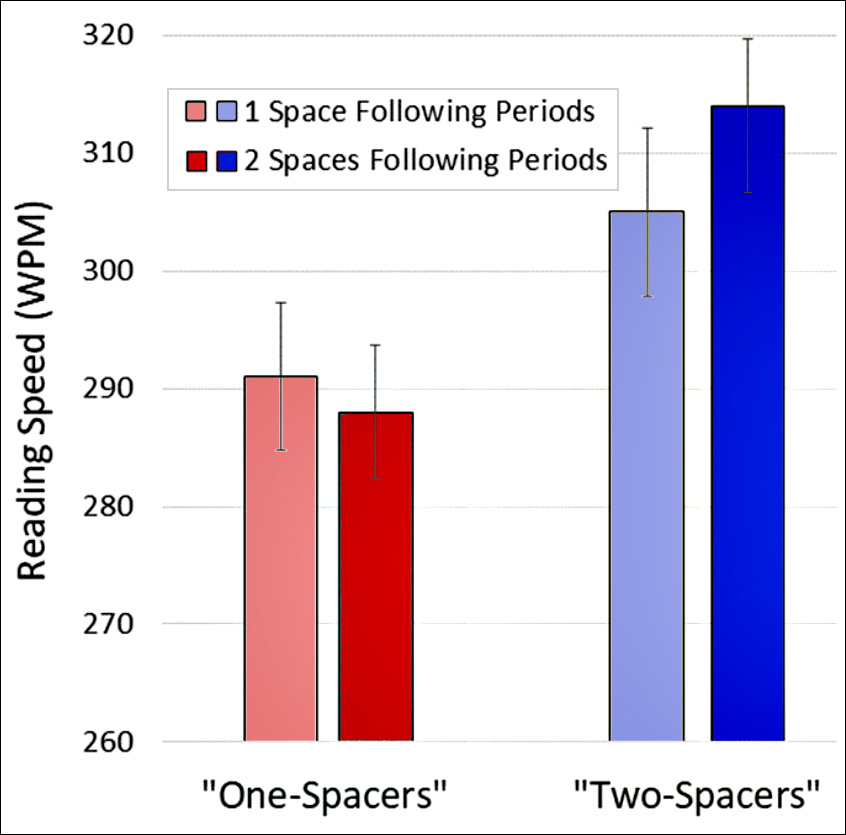A recently released study tested whether it was better to put one space or two spaces after a period. A commenter at Kieran Healy’s Twitter feed comments:
I’m honestly confused about the whole double spacing vs single spacing thing. As a kid I learned to double space after a sentence and then I was told that you no longer do it as an adult, but I kind of do it automatically without even thinking.
— Bryce (@redbryce1) May 5, 2018
I guess this confusion isn’t surprising, but the “rule” has never changed. It’s always been two spaces for monospaced fonts, like the ones on typewriters, and one space for proportional fonts, like the one you’re reading now. There was good reason for this:
- Monospaced fonts like this one already have a lot of air. Two spaces make it easier to quickly distinguish when a new sentence begins.
- Proportional fonts like this one are denser and don’t have that problem. Spaces and capital letters jump out at you.
More to the point, proportional text in magazines, books, and newspapers is usually justified on both right and left—like this paragraph. When text is justified, typesetting equipment ignores your spaces entirely, putting in just enough to make the line lengths come out right. So it doesn’t really matter what you do.
Still, what about the study? As it turns out, the authors tested only monospaced fonts, which is odd since almost no one uses them anymore. Here’s an excerpted and colorized version of their main result:

Among people who preferred one space, reading speed was about 5 wpm higher with one space. Among people who preferred two spaces, reading speed was about 9 wpm higher with two spaces. In other words, people preferred whatever they preferred, and the difference wasn’t very much anyway.
Oddly, though, the folks who preferred two spaces were generally faster readers than those who preferred one space. For $39 I suppose I could find out if the authors had anything to say about this. However, I suspect it means that the difference between the two groups isn’t random.
So the whole study is pretty useless. What would be more interesting would be a study of proportional fonts. Over the past couple of decades, it’s become far more common to use a ragged right margin, like the one you’re reading now. The reason is readability: By keeping the spacing constant, instead of tweaking it to make the line lengths come out evenly, the text is easier to read. But with even spacing, would two spaces after a period make the text even easier to read? I don’t know! Someone should do a study to find out.














